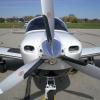CHTs too cold?
-
Members Online
- Marc_B
- Stealth Mooney
- skykrawler
- Shiroyuki
- RescueMunchkin
- Jake@BevanAviation
- Brian2034
- BlueSky247
- Rmfriday
- 231MJ
- prillayo03
- A64Pilot
- Marc B
- Schllc
- eman1200
- dzeleski
- 0TreeLemur
- exM20K
- Ragsf15e
- Sense
- IvanP
- tmo
- Echo
- fsuflyer
- joemoriss
- Anton E
- ferlores
- Joshua Blackh4t
- PT20J
- Arthur Cofano
- Aaviationist
- N204TA
- Patrick Horan
- redbaron1982
- turbofan


Recommended Posts
Join the conversation
You can post now and register later. If you have an account, sign in now to post with your account.